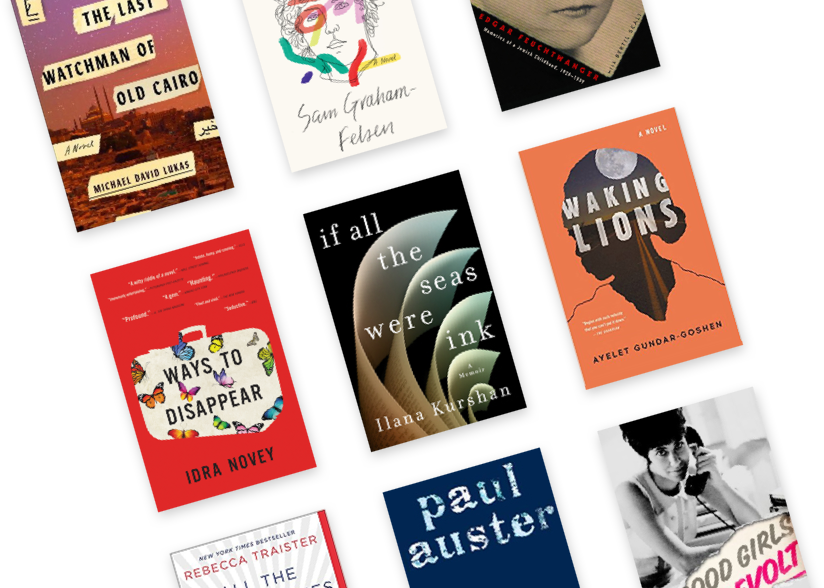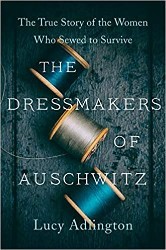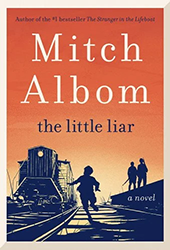Lucy Adlington’s Four Red Sweaters: Powerful True Stories of Women and the Holocaust traces the stories of four young women during the Holocaust: Anita Lasker-Wallfisch, Jochewet (Jock) Heidenstein, Chana Jochewet Zumerkorn, and Regina Feldman. Lasker-Wallfisch, still alive today at ninety-nine years of age, was a German Jew who ultimately survived as a cellist in the Women’s Orchestra of Auschwitz. Heidenstein was a child in Berlin when she escaped to England on the Kindertransport. Zumerkorn, a nineteen-year-old from Łódź at the time of the Nazi invasion, labored in the Łódź Ghetto and ultimately perished in Chelmno. Feldman, from Poland, was one of the few survivors of the death camp Sobibor. Their backgrounds are very different from one another’s, as are the particulars of their lives during the Holocaust, but each woman’s story, meticulously reconstructed by Adlington, makes for compelling and often harrowing reading. What ties them together is that every one of the young women left some trace of her life legible in the form of a red sweater.
Adlington, a fashion historian, clearly has immense respect for the material history of everyday objects; the various facets of fashion history woven throughout the narrative are a major strength of the book. In Four Red Sweaters, Aldington thoughtfully explores the meaning one can glean from sweaters and other articles of clothing. She also contextualizes knitting, sewing, and tailoring as women’s labor, specifically in the ghettos and camps where the women were imprisoned. Finally, Four Red Sweaters touches on the role of Jews in garment and fabric industries pre – World War II, and on how Jews were erased from those industries in Nazi Germany. Readers seeking histories of any of these topics as they pertain to the Holocaust more broadly would likely want to do some further reading, but there is certainly enough to ground the reader — and pique their interest.
The four-person structure has its limits, especially given that some of the subjects’ close family members perished with essentially no surviving record of their inner lives. (This is in contrast to three of the four subjects, who survived the war and participated in various documentation efforts.) The book occasionally diverges from a more “academic” approach to history in its regular attempts to make sense of the probable experiences of those family members.
Overall, Four Red Sweaters: Powerful True Stories of Women and the Holocaust is an engaging and worthwhile read for those seeking exactingly researched and well-contextualized personal accounts of the Holocaust.
Lucy Adlington’s Four Red Sweaters: Powerful True Stories of Women and the Holocaust traces the stories of four young women during the Holocaust: Anita Lasker-Wallfisch, Jochewet (Jock) Heidenstein, Chana Jochewet Zumerkorn, and Regina Feldman. Lasker-Wallfisch, still alive today at ninety-nine years of age, was a German Jew who ultimately survived as a cellist in the Women’s Orchestra of Auschwitz. Heidenstein was a child in Berlin when she escaped to England on the Kindertransport. Zumerkorn, a nineteen-year-old from Łódź at the time of the Nazi invasion, labored in the Łódź Ghetto and ultimately perished in Chelmno. Feldman, from Poland, was one of the few survivors of the death camp Sobibor. Their backgrounds are very different from one another’s, as are the particulars of their lives during the Holocaust, but each woman’s story, meticulously reconstructed by Adlington, makes for compelling and often harrowing reading. What ties them together is that every one of the young women left some trace of her life legible in the form of a red sweater.
Adlington, a fashion historian, clearly has immense respect for the material history of everyday objects; the various facets of fashion history woven throughout the narrative are a major strength of the book. In Four Red Sweaters, Aldington thoughtfully explores the meaning one can glean from sweaters and other articles of clothing. She also contextualizes knitting, sewing, and tailoring as women’s labor, specifically in the ghettos and camps where the women were imprisoned. Finally, Four Red Sweaters touches on the role of Jews in garment and fabric industries pre – World War II, and on how Jews were erased from those industries in Nazi Germany. Readers seeking histories of any of these topics as they pertain to the Holocaust more broadly would likely want to do some further reading, but there is certainly enough to ground the reader — and pique their interest.
The four-person structure has its limits, especially given that some of the subjects’ close family members perished with essentially no surviving record of their inner lives. (This is in contrast to three of the four subjects, who survived the war and participated in various documentation efforts.) The book occasionally diverges from a more “academic” approach to history in its regular attempts to make sense of the probable experiences of those family members.
Overall, Four Red Sweaters: Powerful True Stories of Women and the Holocaust is an engaging and worthwhile read for those seeking exactingly researched and well-contextualized personal accounts of the Holocaust.
Hallel Yadin is an archivist and writer based in Philadelphia.





